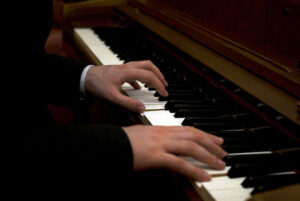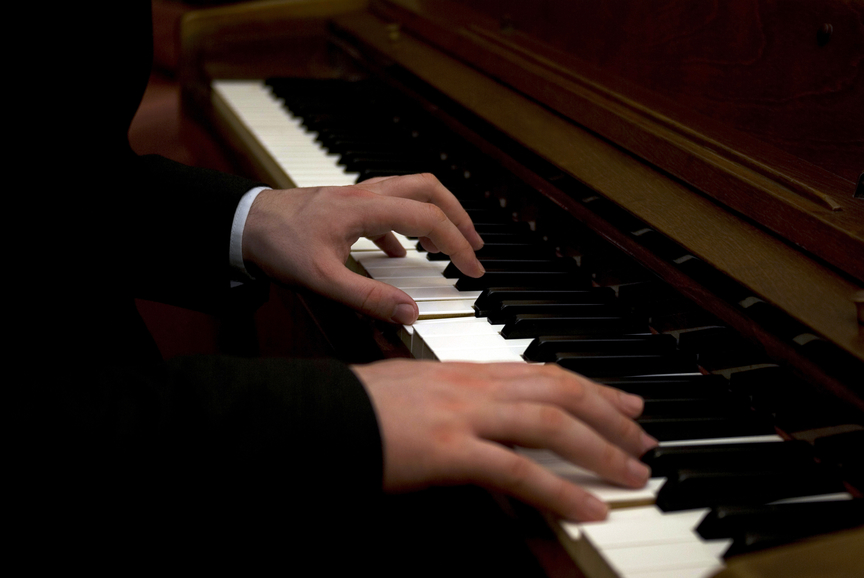
Do you know how to improve your piano playing at the fastest pace? It’s simple: learn each new piece in a way that will make the next one easier to learn.
Simple, but not easy.
Actually, it could be easy, but it means that we have to go against our ingrained habits that we “think” are helping us.
When we begin learning anything, we usually learn it in a way that comes natural to us and enables us to learn it quickly. So let’s picture three people sitting down to learn a written-out piece on piano.
The first person is good at reading music, so he simply reads through the piece a few times and practices the difficult parts until he can play it well.
The second person doesn’t read notes well, but since she had a good musical ear, she listens to a recording and just uses the sheet music for reference. She learns it as well as the first person.
A third pianist doesn’t read well yet and has never learned a piece by ear, so he writes the letter names below each note and learns the piece by reading the letters. He learns to play the piece as well as the others did.
So what’s missing here?
On the surface, nothing is missing. All three pianists learned the music and can go on to the next piece. But will this next piece come easier to them? Or will they simply be repeating the same uphill climb each time they learn something new?
That’s the point.
We want to learn in a way that helps us learn the next piece easier, not merely the same.
In the scenarios above, the first pianist, who could read well, might choose to develop his musical memory by singing the melody a few times, to get it in his ear better. Or he may do some structured ear training by using solfegé syllables. After all, the more he develops his musical ear, the longer he’ll tend to remember the piece. Also, having a good musical ear helps us learn new music more quickly than if we just look at the notes and play them.
The second pianist, who liked to learn by ear, could work on reading the notes. This will help her learn music more quickly in the future as her ear and new note-reading skills combine and support each other.
The third pianist faces the greatest challenge in breaking his established habits. To learn music easily, he’ll need to learn to read well and also develop his musical ear in order to quickly grasp both the notes and musical essence of each new piece.
Although none of the skills involved in these scenarios is too difficult to learn, they do require a willingness to face an immediate “learning curve” that may not seem necessary to the pianist at the time. But in order to learn better and more easily the next time, we need to take a good look at how we learn the music we’re currently working on. But if we can do this and expand our learning style, we’ll improve at a much faster rate.
Good luck with your learning!!!
Take your left hand playing to a new level with my free ebook: Left Hand Techniques for Jazz Piano
You’ll also get my weekly jazz newsletter with practice tips and inspiration

